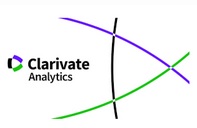Implication of Visuospatial and Phonological Working Memory in the Clinical Heterogeneity of Attention-Deficit/Hyperactivity Disorder (ADHD)
Supporting Agencies
- Universidad de Murcia
Abstract
Introduction: The interest in studying the neuropsychological deficits that lie behind ADHD, among which the Working Memory (WM) stands out in its visuospatial and phonological dimensions, has been on increase. The aim of the current study was to explore the performance differences concerning the short-term memory and the visuospatial and phonological working memory among control and clinical groups acknowledging the clinical heterogeneity of the disorder.
Method: A group of 76 children with a prior diagnosis of ADHD was divided by the clinical subtype of the disorder: ADHD predominantly inattentive (n = 26, age M = 10,9, SD = 1,8; 66% male), and combined ADHD (n = 50, age M = 10.8, DT = 1.9; 61.5% male). Additionally, a control group of typically developing children was formed (n = 40, age M = 10.2, SD = 1.9; 57.5% male). Both groups completed a task battery to aimed to measure the short-term memory, as well as the visuospatial and phonological working memory.
Results: The ADHD group showed a decreased performance at visuospatial (Corsi Block Task), as well as phonological (WISC Letter-Number Sequencing) working memory tasks. The decreased performance was consistent among the clinical subtypes. The dimensions of ADHD and the performance output in the neuropsychological tasks used in the study were not related.
Discussion: This study offers empirical evidence to the hypothesis that suggests that children with ADHD show a poor performance than controls at Working Memory tasks, including both visuospatial and phonological WM. In addition, the results of the study suggested that there is no correlation between the dimensions of the ADHD and the performance output in the Working Memory tasks.
Downloads
References
Alderson, R. M., Hudec, K. L., Patros, C. H., & Kasper, L. J. (2013a). Working memory deficits in adults with attention-deficit/hyperactivity disorder (ADHD): An examination of central executive and storage/rehearsal processes. Journal of abnormal psychology, 122(2), 532. DOI:10.1037/a0031742
Alderson, R. M., Kasper, L. J., Hudec, K. L., & Patros, C. H. (2013b). Attention-deficit/hyperactivity disorder (ADHD) and working memory in adults: a meta-analytic review. Neuropsychology, 27(3), 287. DOI:10.1037/a0032371
Baddeley, A. (1992). Working memory. Science, 255(5044), 556. DOI:10.1126/science.1736359
Baddeley, A. D., & Hitch, G. (1974). Working memory. Psychology of learning and motivation, 8, 47-89.
Barkley, R. A. (1997). Behavioral inhibition, sustained attention, and executive functions: constructing a unifying theory of ADHD. Psychological bulletin, 121(1), 65. DOI:10.1037/0033-2909.121.1.65
Barkley, R. A. & Murphy, K. R. (2010). Impairment in occupational functioning and adult ADHD: The predictive utility of executive function (EF) ratings versus EF tests. Archives of Clinical Neuropsychology, 25, 157-173. DOI: 10.1093/arclin/acq014
Belsley, D. A., Kuh, E, & Welsch, R. E. (1980). Regression Diagnostics: Identifying Influential Data and Sources of Collinearity. New York: John Wiley and Sons.
Bolden, J., Rapport, M. D., Raiker, J. S., Sarver, D. E., & Kofler, M. J. (2012). Understanding phonological memory deficits in boys with attention-deficit/hyperactivity disorder (ADHD): dissociation of short-term storage and articulatory rehearsal processes. Journal of abnormal child psychology, 40(6), 999-1011. DOI:10.1007/s10802-012-9619-6
Brocki, K. C., Randall, K. D., Bohlin, G., & Kerns, K. A. (2008). Working memory in school-aged children with attention-deficit/hyperactivity disorder combined type: Are deficits modality specific and are they independent of impaired inhibitory control? Journal of Clinical and Experimental Neuropsychology, 30(7), 749-759. DOI:10.1080/13803390701754720
Burgess, G. C., Depue, B. E., Ruzic, L., Willcutt, E. G., Du, Y. P., & Banich, M. T. (2010). Attentional control activation relates to working memory in attention-deficit/hyperactivity disorder. Biological psychiatry, 67(7), 632-640. DOI:10.1016/j.biopsych.2009.10.036
Castellanos, F. X., & Tannock, R. (2002). Neuroscience of attention-deficit/hyperactivity disorder: the search for endophenotypes. Nature Reviews Neuroscience, 3(8), 617-628. DOI:10.1038/nrn896
Chhabildas, N., Pennington, B. F., & Willcutt, E. G. (2001). A comparison of the neuropsychological profiles of the DSM-IV subtypes of ADHD. Journal of abnormal child psychology, 29(6), 529-540. DOI: 0091-0627/01/1200-0529$19.50/0.
Coghill, D. R., Seth, S., & Matthews, K. (2014). A comprehensive assessment of memory, delay aversion, timing, inhibition, decision making and variability in attention deficit hyperactivity disorder: advancing beyond the three-pathway models. Psychological medicine, 44(09), 1989-2001. DOI:10.1017/S0033291713002547
Corsi, P. M. (1973). Human memory and the medial temporal region of the brain (Doctoral dissertation, ProQuest Information & Learning).
Diamond, A. (2005). Attention-deficit disorder (attention-deficit/hyperactivity disorder without hyperactivity): a neurobiologically and behaviorally distinct disorder from attention-deficit/hyperactivity disorder (with hyperactivity). Development and psychopathology, 17(03), 807-825. DOI:10.1017/S0954579405050388
Dovis, S., Van der Oord, S., Wiers, R. W., & Prins, P. J. (2013). What part of working memory is not working in ADHD? Short-term memory, the central executive and effects of reinforcement. Journal of abnormal child psychology,41(6), 901-917. DOI:10.1007/s10802-013-9729-9
DuPaul, G. J., Power, T. J., Anastopoulos, A. D., & Reid, R. ADHD Rating Scale-IV: checklists, norms, and clinical interpretation. New York: Guilford; 1998.
Faraone, S. V., Biederman, J., Weber, W., & Russell, R. L. (1998). Psychiatric, neuropsychological, and psychosocial features of DSM-IV subtypes of attention-deficit/hyperactivity disorder: results from a clinically referred sample. Journal of the American Academy of Child & Adolescent Psychiatry, 37(2), 185-193. DOI: http://dx.doi.org/10.1097/00004583-199802000-00011
Fenollar-Cortés, J., & Fuentes, L. J. (2016). The ADHD Concomitant Difficulties Scale (ADHD-CDS), a Brief Scale to Measure Comorbidity Associated to ADHD. Frontiers in Psychology, 7, 871. DOI: 10.3389/fpsyg.2016.00871
Coolican, H. (2009). Research methods and statistics in psychology. London, United Kingdom: Hodder.
Gau, S. S. F., & Shang, C. Y. (2010). Executive functions as endophenotypes in ADHD: evidence from the Cambridge Neuropsychological Test Battery (CANTAB). Journal of Child Psychology and Psychiatry, 51(7), 838-849. DOI:10.1111/j.1469-7610.2010.02215.x
Guérard, K., & Tremblay, S. (2008). Revisiting evidence for modularity and functional equivalence across verbal and spatial domains in memory. Journal of Experimental Psychology: Learning, Memory, and Cognition, 34(3), 556. DOI:10.1037/0278-7393.34.3.556
Holmes, J., Gathercole, S. E., Place, M., Alloway, T. P., Elliott, J. G., & Hilton, K. A. (2010). The diagnostic utility of executive function assessments in the identification of ADHD in children. Child and Adolescent Mental Health,15(1), 37-43. DOI:10.1111/j.1475-3588.2009.00536.x
Kane, M. J., Brown, L. H., McVay, J. C., Silvia, P. J., Myin-Germeys, I., & Kwapil, T. R. (2007). For whom the mind wanders, and when an experience-sampling study of working memory and executive control in daily life. Psychological science, 18(7), 614-621. DOI: 10.1111/j.1467-9280.2007.01948.x
Kasper, L. J., Alderson, R. M., & Hudec, K. L. (2012). Moderators of working memory deficits in children with attention-deficit/hyperactivity disorder (ADHD): a meta-analytic review. Clinical psychology review, 32(7), 605-617. DOI:10.1016/j.cpr.2012.07.001
Kofler, M. J., Rapport, M. D., Bolden, J., Sarver, D. E., & Raiker, J. S. (2010). ADHD and working memory: the impact of central executive deficits and exceeding storage/rehearsal capacity on observed inattentive behavior. Journal of Abnormal Child Psychology, 38(2), 149-161. DOI:10.1007/s10802-009-9357-6
Martinussen, R., Hayden, J., Hogg-Johnson, S., & Tannock, R. (2005). A meta-analysis of working memory impairments in children with attention-deficit/hyperactivity disorder. Journal of the American Academy of Child & Adolescent Psychiatry, 44(4), 377-384. DOI:10.1097/01.chi.0000153228.72591.73
Martinussen, R., & Tannock, R. (2006). Working memory impairments in children with attention-deficit hyperactivity disorder with and without comorbid language learning disorders. Journal of clinical and experimental neuropsychology, 28(7), 1073-1094. DOI:10.1080/13803390500205700
McInerney, R. J., Hrabok, M., & Kerns, K. A. (2005). The children’s size-ordering task: a new measure of nonverbal working memory. Journal of Clinical and Experimental Neuropsychology, 27(6), 735-745. DOI:10.1081/13803390490918633
McInnes, A., Humphries, T., Hogg-Johnson, S., & Tannock, R. (2003). Listening comprehension and working memory are impaired in attention-deficit hyperactivity disorder irrespective of language impairment. Journal of abnormal child psychology, 31(4), 427-443. DOI:10.1023/A:1023895602957
Miyake, A., Friedman, N. P., Emerson, M. J., Witzki, A. H., Howerter, A., & Wager, T. D. (2000). The unity and diversity of executive functions and their contributions to complex “frontal lobe” tasks: A latent variable analysis.Cognitive psychology, 41(1), 49-100. DOI:10.1006/cogp.1999.0734
Nyman, A., Taskinen, T., Grönroos, M., Haataja, L., Lähdetie, J., & Korhonen, T. (2010). Elements of working memory as predictors of goal-setting skills in children with attention-deficit/hyperactivity disorder. Journal of learning disabilities, 43(6), 553-562. DOI:10.1177/0022219410375001
Passolunghi, M. C., & Mammarella, I. C. (2010). Spatial and visual working memory ability in children with difficulties in arithmetic word problem solving.European Journal of Cognitive Psychology, 22(6), 944-963. DOI:10.1080/09541440903091127
Pickering, S. J., & Gathercole, S. E. (2004). Distinctive working memory profiles in children with special educational needs. Educational Psychology, 24(3), 393-408. DOI:10.1080/0144341042000211715
Raiker, J. S., Rapport, M. D., Kofler, M. J., & Sarver, D. E. (2012). Objectively-measured impulsivity and attention-deficit/hyperactivity disorder (ADHD): testing competing predictions from the working memory and behavioral inhibition models of ADHD. Journal of abnormal child psychology, 40(5), 699-713. DOI:10.1007/s10802-011-9607-2
Rapport, M. D., Alderson, R. M., Kofler, M. J., Sarver, D. E., Bolden, J., & Sims, V. (2008). Working memory deficits in boys with attention-deficit/hyperactivity disorder (ADHD): the contribution of central executive and subsystem processes. Journal of Abnormal Child Psychology, 36(6), 825-837. DOI:10.1007/s10802-008-9215-y
Richardson, J. T. (2007). Measures of short-term memory: a historical review. Cortex, 43(5), 635-650. DOI:10.1016/S0010-9452(08)70493-3
Rommelse, N. N. J., Van der Stigchel, S., Witlox, J., Geldof, C., Deijen, J. B., Theeuwes, J., ... & Sergeant, J. A. (2008). Deficits in visuo-spatial working memory, inhibition and oculomotor control in boys with ADHD and their non-affected brothers. Journal of neural transmission, 115(2), 249-260. DOI:10.1007/s00702-007-0865-7
Schweitzer, J. B., Hanford, R. B., & Medoff, D. R. (2006). Working memory deficits in adults with ADHD: is there evidence for subtype differences?. Behavioral and Brain Functions, 2(1), 1. DOI:10.1186/1744-9081-2-43
Schoechlin, C., & Engel, R. R. (2005). Neuropsychological performance in adult attention-deficit hyperactivity disorder: Meta-analysis of empirical data. Archives of Clinical Neuropsychology, 20(6), 727-744. DOI:10.1016/j.acn.2005.04.005
Sergeant, J. A., Geurts, H., & Oosterlaan, J. (2002). How specific is a deficit of executive functioning for attention-deficit/hyperactivity disorder? Behavioural brain research, 130(1), 3-28. DOI:10.1016/S0166-4328(01)00430-2
Shimoni, M. A., Engel-Yeger, B., & Tirosh, E. (2012). Executive dysfunctions among boys with Attention Deficit Hyperactivity Disorder (ADHD): Performance-based test and parents report. Research in developmental disabilities, 33(3), 858-865. DOI:10.1016/j.ridd.2011.12.014
Sjöwall, D., Backman, A., & Thorell, L. B. (2015). Neuropsychological heterogeneity in preschool ADHD: Investigating the interplay between cognitive, affective and motivation-based forms of regulation. Journal of abnormal child psychology, 43(4), 669-680. DOI:10.1007/s10802-014-9942-1
Smith, E. E., & Jonides, J. (1999). Storage and executive processes in the frontal lobes. Science, 283(5408), 1657-1661. DOI:10.1126/science.283.5408.1657
Thorell, L. B. (2007). Do delay aversion and executive function deficits make distinct contributions to the functional impact of ADHD symptoms? A study of early academic skill deficits. Journal of Child Psychology and Psychiatry, 48(11), 1061-1070. DOI:10.1111/j.1469-7610.2007.01777.x
Tillman, C., Eninger, L., Forssman, L., & Bohlin, G. (2011). The relation between working memory components and ADHD symptoms from a developmental perspective. Developmental Neuropsychology, 36(2), 181-198. DOI:10.1080/87565641.2010.549981
van Ewijk, H., Heslenfeld, D. J., Luman, M., Rommelse, N. N., Hartman, C. A., Hoekstra, P., ... & Oosterlaan, J. (2014). Visuospatial working memory in ADHD patients, unaffected siblings, and healthy controls. Journal of Attention Disorders, 18(4), 369-378. DOI:10.1177/1087054713482582
Wåhlstedt, C., Thorell, L. B., & Bohlin, G. (2009). Heterogeneity in ADHD: neuropsychological pathways, comorbidity and symptom domains. Journal of abnormal child psychology, 37(4), 551-564. DOI:10.1007/s10802-008-9286-9
Wechsler, D. (2005). Escala de Inteligencia de Wechsler para niños. Cuarta Edición (WISC-IV). Madrid: TEA Ediciones.
Westerberg, H., Hirvikoski, T., Forssberg, H., & Klingberg, T. (2004). Visuo-spatial working memory span: a sensitive measure of cognitive deficits in children with ADHD. Child Neuropsychology, 10(3), 155-161. DOI:10.1080/09297040409609806
Willcutt, E. G., Doyle, A. E., Nigg, J. T., Faraone, S. V., & Pennington, B. F. (2005a). Validity of the executive function theory of attention-deficit/hyperactivity disorder: a meta-analytic review. Biological psychiatry, 57(11), 1336-1346. DOI:10.1016/j.biopsych.2005.02.006
Willcutt, E. G., Nigg, J. T., Pennington, B. F., Solanto, M. V., Rohde, L. A., Tannock, R., ... & Lahey, B. B. (2012). Validity of DSM-IV attention deficit/hyperactivity disorder symptom dimensions and subtypes. Journal of abnormal psychology, 121(4), 991-1010. DOI:10.1037/a0027347
Willcutt, E. G., Pennington, B. F., Olson, R. K., Chhabildas, N., & Hulslander, J. (2005b). Neuropsychological analyses of comorbidity between reading disability and attention deficit hyperactivity disorder: In search of the common deficit. Developmental neuropsychology, 27(1), 35-78.
The works published in this journal are subject to the following terms:
1. The Publications Service of the University of Murcia (the publisher) retains the property rights (copyright) of published works, and encourages and enables the reuse of the same under the license specified in paragraph 2.
© Servicio de Publicaciones, Universidad de Murcia, 2022
2. The works are published in the online edition of the journal under a Creative Commons Reconocimiento-CompartirIgual 4.0 (legal text). You can copy, use, distribute, transmit and publicly display, provided that: i) you cite the author and the original source of publication (journal, editorial and URL of the work), ii) are not used for commercial purposes, iii ) mentions the existence and specifications of this license.
This work is licensed under a Creative Commons Attribution-ShareAlike 4.0 International License.
3. Conditions of self-archiving. Is allowed and encouraged the authors to disseminate electronically pre-print versions (version before being evaluated and sent to the journal) and / or post-print (version reviewed and accepted for publication) of their works before publication, as it encourages its earliest circulation and diffusion and thus a possible increase in its citation and scope between the academic community. RoMEO Color: Green.















